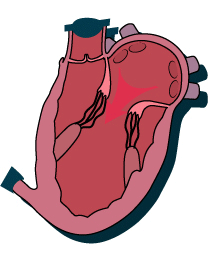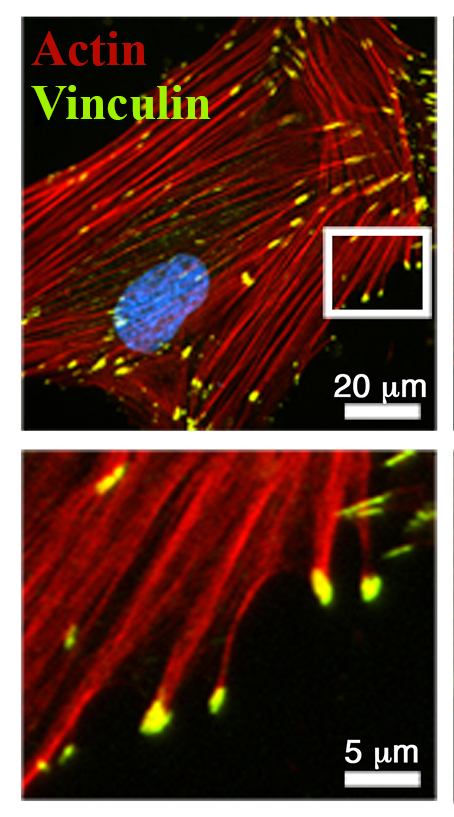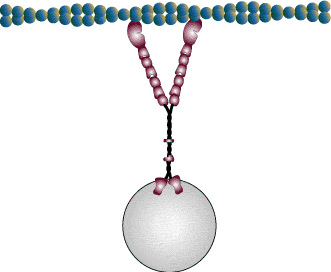
Our lab’s main interest is the study of molecular mechanics and cellular motility. Our interests include: cell motility, regulation of cell shape, the mechanism and regulation of muscle contraction, and the molecular mechanics of bacterial adhesion pili. Below is a list of our past and present work on these topics.
• Mechanism of muscle contaction and regulation
• Structure and mechanics of Cytoskeletal filaments

Our lab’s investigations of muscle contraction and regulation focus on cardiac muscle. Genetic diseases, like hypertrophic cardiomyopathy (HCM) and dilated cardiomyopathy (DCM), are caused by mutations in sarcomeric proteins. We study the effects of these mutations on force and motion generation of isolated myosin and reconstituted thin filaments. These studies have both clinical and scientific importance because information about the underlying disease process provides insight about the fundamental contractile mechanism as well as providing guidance for otherwise empiric treatments for the disease. We are currently studying mutations in the myosin regulatory light chain (In Collaboration with Dr. Szczesna-Cordary). Knowledge of how these mutations affect the interaction of actin and myosin allows the degree of alteration to higher functional units, such as the cardiac muscle fiber, or the heart itself to be correlated with a primary contractile defect.
Click here for associated publications
 Structure and mechanics
Structure and mechanics Here our overall goal is to understand the nature and regulation of cytoskeletal dynamics in differentiated vascular smooth muscle cells. Our project specifically addresses this goal by aiming to determine the impact of vascular smooth muscle cytoskeletal actin-binding proteins (ABPs) on thin filament structure and mechanics. To achieve this goal we collaborate with Dr. Lehman to carry out high-resolution electron microscopy, helical reconstruction and single particle analysis of reconstituted thin filaments to define the molecular interactions of ABPs on actin. Corresponding strategies in our lab use laser-trapping and single molecule fluorescence methods to determine the effects of force on ABP-binding to F-actin and the effect of ABPs on the mechanical performance of thin filaments.
Click here for associated publications
 The transport of intracellular cargo often involves molecular motors, proteins that travel along cytoskeletal filaments. While in the Warshaw lab, I studied the mechanical and enzymatic properties of myosin V, a myosin molecular motor involved in organelle transport. Myosin V is involved in: the extension of filopodia in nerve growth cones, the transport of vacuoles and mRNA to the daughter cell in budding yeast, the transport of smooth endoplasmic reticulum into the dendritic spines of purkinje cells, and the transport of melanosomes into the dendridic processes of melanocytes (Reviewed in Mermall et al., 1998). For background and more detailed information on the myosin V experiments I performed while in the Warshaw lab at the University of Vermont click here
The transport of intracellular cargo often involves molecular motors, proteins that travel along cytoskeletal filaments. While in the Warshaw lab, I studied the mechanical and enzymatic properties of myosin V, a myosin molecular motor involved in organelle transport. Myosin V is involved in: the extension of filopodia in nerve growth cones, the transport of vacuoles and mRNA to the daughter cell in budding yeast, the transport of smooth endoplasmic reticulum into the dendritic spines of purkinje cells, and the transport of melanosomes into the dendridic processes of melanocytes (Reviewed in Mermall et al., 1998). For background and more detailed information on the myosin V experiments I performed while in the Warshaw lab at the University of Vermont click here
The above figure was modified from the Myosin Home Page.

As a graduate student in the laboratories of Dr. Vigoreaux and Dr. Maughan of the University of Vermont I studied the effects of induced and spontaneous contractile protein mutations on Drosophila flight performance, isolated flight muscle fiber mechanics and flight muscle ultrastructure. For more information about these experiments and some thoughts on stretch activation click here.
Also my recent review on stretch activation will soon be available at Landes Bioscience.
